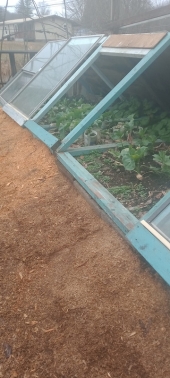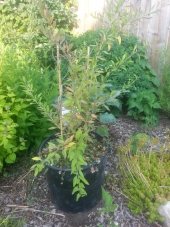
 6
6




Blog: 5 Acres & A Dream
Books: Kikobian Books | Permies Digital Market
 9
9




Inmate, Natures Asylum, Siskiyou Ward
"Live Simply, So Others may SIMPLY LIVE"




Blog: 5 Acres & A Dream
Books: Kikobian Books | Permies Digital Market
 2
2




Building regenerative Christian villages @ https://jesusvillage.org/
100+ Homesteading Software Tools @ https://homestead.tools/
 2
2




 1
1




Blog: 5 Acres & A Dream
Books: Kikobian Books | Permies Digital Market

 4
4





How Permies works: https://permies.com/wiki/34193/permies-works-links-threads
My projects on Skye: The tree field, Growing and landracing, perennial polycultures, "Don't dream it - be it! "
 3
3




Blog: 5 Acres & A Dream
Books: Kikobian Books | Permies Digital Market
 2
2




 2
2




Douglas Alpenstock wrote:If eggshells work, I wonder if the crushed oyster shells sold in giant bags for chickens would do the same job. Hmmm...
Blog: 5 Acres & A Dream
Books: Kikobian Books | Permies Digital Market
 7
7




Douglas Alpenstock wrote:If eggshells work, I wonder if the crushed oyster shells sold in giant bags for chickens would do the same job. Hmmm...
 2
2




six of one... baker’s dozen of the other
 4
4




 2
2




-- Wisdsom pursues me but I run faster.
 3
3




Leigh Tate wrote: know what doesn't work for slugs - diatomaceous earth. They didn't like getting sprinkled with it, but it didn't stop them.
I am only one, but still I am one. I cannot do everything, but still I can do something; and because I cannot do everything, I will not refuse to do something that I can do. (E.E.Hale)
 6
6




This is all just my opinion based on a flawed memory

 4
4




Dj Cox wrote:Paul, I pulled 37 baby slugs off a daikon plant last night. I also have a large patch of it that I think has been acting as a large breeding site for them. The slugs have been migrating from that patch into my young greens. I'm at my wits end on dealing with these slugs. Right now, I have been watering in the evening every other night to help draw them out of the ground and then I hunt them all for about 2 hours in the early night. I'm also using Sluggo. I live in the Pacific Northwest and I just can't catch a break with these things. I'm also putting out fresh crushed greens in the paths to help bait them for easier murdering. I haven't tried placing pots around the young plants yet. I'm hoping that the slugs will be less of a problem next year if I do some serious slug killing in the fall. Otherwise, I might just quit planting annuals all together.
 1
1




 2
2




We can take care of our small piece of this world. Leave no footprints.
 8
8








"When the whole world is running towards a cliff, he who is running in the opposite direction appears to have lost his mind." C.S. Lewis
Visit https://themaineingredient.com for organic, premium dried culinary herbs that are grown, processed, and packaged in the USA.
 1
1








Matt McSpadden wrote: Leigh seems to insinuate that it is the leaves that attract slugs and woodchips do not.
Blog: 5 Acres & A Dream
Books: Kikobian Books | Permies Digital Market








 2
2




 1
1
















 1
1




 3
3




This is all just my opinion based on a flawed memory





 1
1




This is all just my opinion based on a flawed memory

 1
1




randal cranor wrote:Howdy,
I don't remember where I read it, but my slug deterrent over the years has been crushed egg shells. Slugs can't handle the sharp edges. ...
 1
1




Ben Zumeta wrote:With a very small garden I might consider the copper edging trick with wire along any raised beds or pots. Martha Stewart did a penny ring glued around her pots. I do not like to do it, but with invasive European brown slugs I will put a sharp stick through the back of their head if I have no fowl to feed. This seems to kill them immediately.
 2
2




Ben Zumeta wrote:One side note that may be of interest is that the slug to snail ratio in an ecosystem reflects calcium availability, as the snail’s shell is largely calcium. They seem equally problematic (or beneficial), but which terrestrial Gastropoda you see does tell something about your soil and garden ecosystem.

| I agree. Here's the link: http://stoves2.com |





